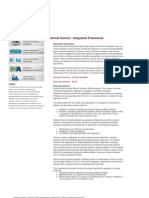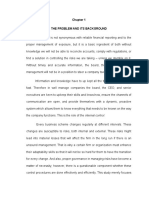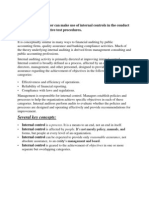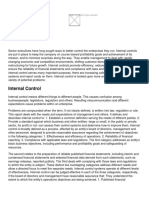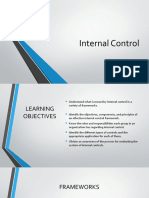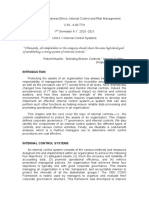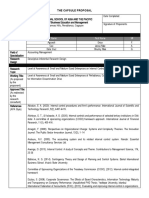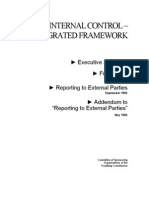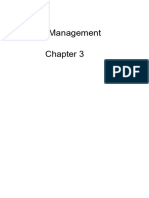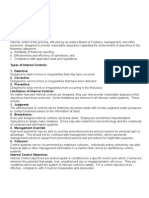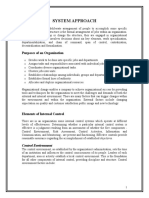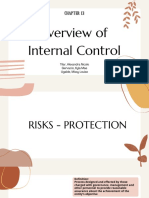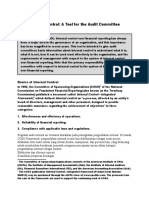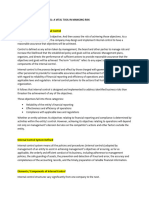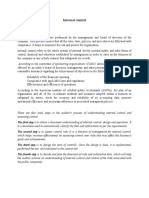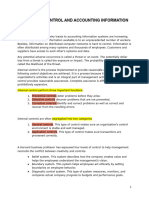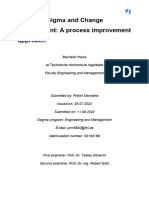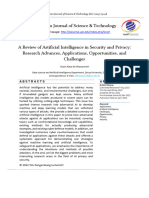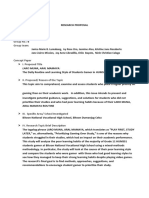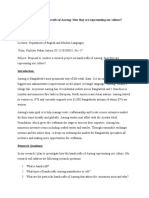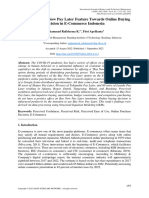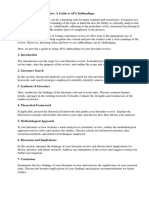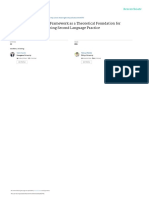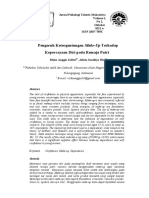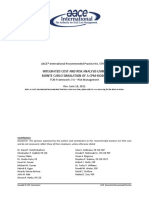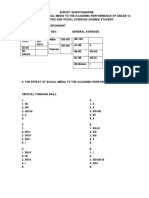0% found this document useful (0 votes)
248 views5 pagesControl Environment
The document summarizes frameworks and literature related to internal controls. It discusses the COSO and COCO frameworks, which were established to improve internal controls and governance. COSO defines internal control as a process run by management to reasonably ensure objectives are met regarding operations, reporting, and compliance. The framework identifies five components of internal control: control environment, risk assessment, control activities, information/communication, and monitoring. Related studies found internal controls play an important role in SMME and company operations and performance, though their support of SMME sustainability was limited. Effective internal controls positively contribute to long-term growth, especially in developed institutional environments.
Uploaded by
Ma. Cathlyn ComoraCopyright
© © All Rights Reserved
We take content rights seriously. If you suspect this is your content, claim it here.
Available Formats
Download as DOCX, PDF, TXT or read online on Scribd
0% found this document useful (0 votes)
248 views5 pagesControl Environment
The document summarizes frameworks and literature related to internal controls. It discusses the COSO and COCO frameworks, which were established to improve internal controls and governance. COSO defines internal control as a process run by management to reasonably ensure objectives are met regarding operations, reporting, and compliance. The framework identifies five components of internal control: control environment, risk assessment, control activities, information/communication, and monitoring. Related studies found internal controls play an important role in SMME and company operations and performance, though their support of SMME sustainability was limited. Effective internal controls positively contribute to long-term growth, especially in developed institutional environments.
Uploaded by
Ma. Cathlyn ComoraCopyright
© © All Rights Reserved
We take content rights seriously. If you suspect this is your content, claim it here.
Available Formats
Download as DOCX, PDF, TXT or read online on Scribd
/ 5

